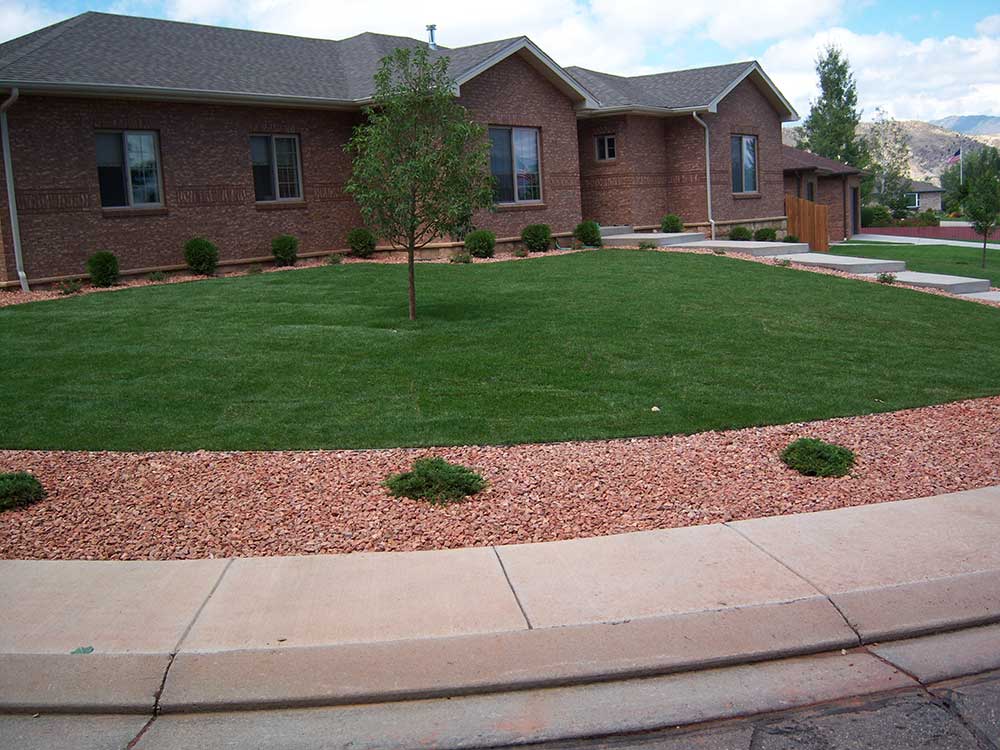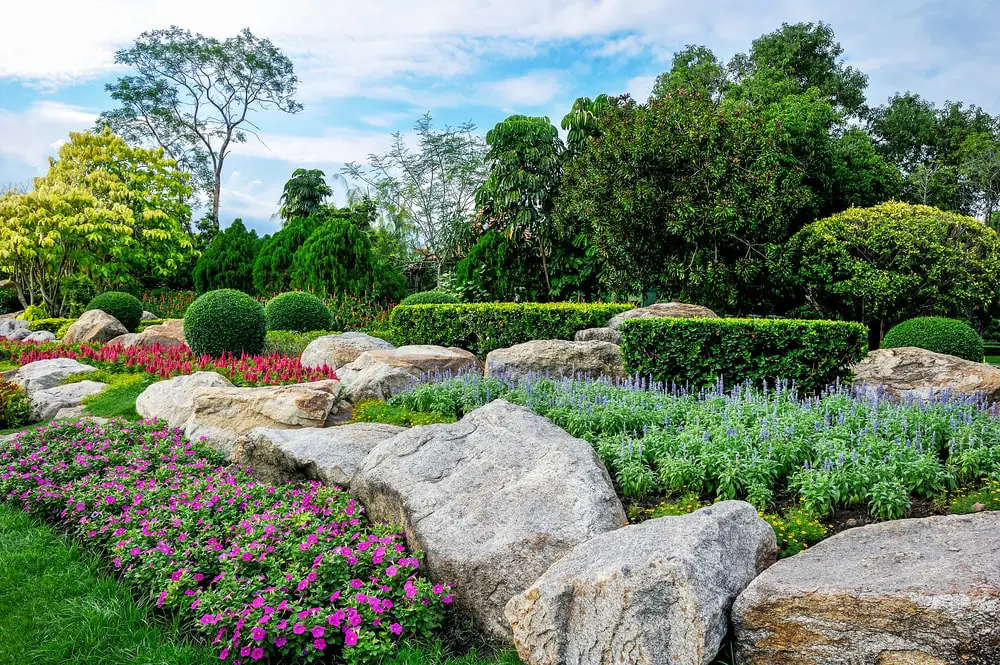Get This Report on Hilton Head Landscapes
Table of ContentsSome Known Details About Hilton Head Landscapes The Ultimate Guide To Hilton Head LandscapesThe 9-Minute Rule for Hilton Head LandscapesFascination About Hilton Head LandscapesThe Facts About Hilton Head Landscapes Uncovered7 Easy Facts About Hilton Head Landscapes DescribedThings about Hilton Head LandscapesThe Only Guide for Hilton Head Landscapes
Type compatibility is additionally a significant element of unity in designone or more noticeably different kinds are great for comparison and focus, yet usually all various other types ought to have some resemblances for a linked appearance. Structure refers to exactly how rugged or fine the surface area of the plant or hardscape material really feels and/or looks.
Instances of plants with crude texture include philodendrons, agaves, bromeliads, hollies, hands, and hydrangeas. Hardscape with rugged appearance includes rough-cut rock, rough-finished brick, and incomplete timber with knots and a raised grain. Matured or old building and construction product that keeps a weather-beaten surface area is typically coarse in appearance. Qualities that produce fine texture include tiny vegetation; thin, strappy leaves (yards) or tall, thin stems; small, thick branches and small branches; long stems (vines); and little, delicate flowers.
The 2-Minute Rule for Hilton Head Landscapes
Most plants are medium structure, because they can not be referred to as having either crude or great appearance. They are characterized by medium-sized fallen leaves with straightforward shapes and smooth sides. The average-sized branches are not densely spaced nor widely spaced, and the overall form is generally rounded or mounding. Medium-textured plants act as a history to web link and unify the coarse- and fine-textured plants.

To make an area feel smaller sized, position the crude structures along the outer boundary and the great structures closest to the visitor. The information of the coarse texture makes the plants appear closer and makes the room really feel smaller sized. The viewed structure of plants can likewise transform with the distance from the plant.
The 20-Second Trick For Hilton Head Landscapes
Strong shades increase the comparison and make the structure appear coarser, while soft shades can flatten appearance. Hardscape with a rugged texturesuch as very harsh rocks and strong, large timberstends to make all plant product appear a lot more medium textured. Designers commonly develop a texture research (Figure 8) theoretically to aid decide the arrangement of plant products.
Figure 8. Structure study. Color in plant material and hardscape includes rate of interest and selection to the landscape. Shade is one of the most conspicuous element in the landscape and is typically the focus of a lot of home owners; nonetheless, it is also the most short-lived aspect, generally lasting only a few weeks a year for specific plants.
Everything about Hilton Head Landscapes
An easy description of the shade wheel consists of the 3 main colors of red, blue, and yellow; the 3 additional colors (a mix of two primaries) of green, orange, and violet; and six tertiary shades (a mix of one nearby key and additional color), such as red-orange. Shade concept describes the connection of shades to every various other and exactly how they should be made use of in a composition.

Similar (often called harmonious) color design are any kind of three to five colors that are nearby on the shade wheel, such as red, red-orange, orange, yellow-orange, and yellow, or blue, blue-violet, and violet (hilton head landscapers). The shades belong to each various other because they generally include two main shades mixed to create an additional and two tertiary colors, which implies they share usual buildings
Complementary colors are typically discovered naturally in blossoms; a typical pair is yellow and violet. Shade is located in the blossoms, foliage, bark, and fruit of plants.
The smart Trick of Hilton Head Landscapes That Nobody is Talking About
Green foliage in all its numerous shades is the leading color by quantity, however various other shades record interest quicker as a result of their high comparison to the color environment-friendly. Shade is additionally located in buildings, rocks, pavers, wood, and furnishings. The majority of colors in natural materials, such as stone and timber, are commonly muted and tend to be variations of brownish, tan, and light yellow.
Color is an essential component for creating interest and variety in the landscape. Colors have properties that can influence emotions, spatial understanding, light high quality, equilibrium, and emphasis. One home of shade is described family member to our website temperaturecolors seem cool or warm and can impact emotions or feelings. Cool shades often tend to be soothing and should be used in locations for relaxation and calmness.
The Greatest Guide To Hilton Head Landscapes
The "temperature" of colors can additionally impact the perception of range. Great colors often tend to recede and are viewed as being farther away, making a room feel larger. Cozy colors often tend to development and are perceived as being closer, making a space really feel smaller sized. Shade can additionally be used to catch focus and direct sights.
Bright yellow, which has the highest possible intensity, also has a high contrast with all various other shades (typically defined as a "pop" of shade) and need to be made use of moderately. A percentage of extreme shade has as much visual weight as a large amount of an extra controlled or weak shade.
Similar (in some cases called harmonious) color design are any kind of 3 to five colors that are adjacent on the color wheel, such as red, red-orange, orange, yellow-orange, and yellow, or blue, blue-violet, and violet. The shades are relevant per other because they normally consist of 2 primaries mixed to develop an additional and two tertiary colors, which indicates they share usual residential properties.
5 Simple Techniques For Hilton Head Landscapes
Corresponding shades are commonly located normally in flowers; an usual set is yellow and violet. Color is located in the blossoms, vegetation, bark, and fruit of plants.
Green vegetation in all its different shades is the leading shade by quantity, yet other colors record attention quicker because of their high comparison to the color environment-friendly - landscaping hilton head sc - https://h1tnhdlndscps.carrd.co. Shade is likewise found in buildings, rocks, pavers, timber, and furniture. The majority of colors in all-natural materials, such as rock and timber, are usually soft and tend to be variants of brown, tan, and light yellow
All About Hilton Head Landscapes
Shade is an essential element for creating passion and variety in the landscape. Colors have residential or commercial properties that can impact feelings, spatial perception, light high quality, equilibrium, and focus. One home of shade is defined relative to temperaturecolors seem amazing or cozy and can influence feelings or feelings. Awesome colors have a tendency to be soothing and must be made use of in locations for leisure and serenity.
The "temperature" of colors can also affect the perception of range. Cool shades often tend to decline and are regarded as being further away, making an area feel larger. Cozy shades have a tendency to development and are viewed as being closer, making a space really feel smaller sized. Shade can likewise be used to capture attention and straight views.
Bright yellow, which has the highest intensity, also has a high comparison with all other colors (often defined as a "pop" of color) and need to be utilized sparingly. A percentage of extreme color has as much aesthetic weight as a large quantity of a more restrained or weaker shade.